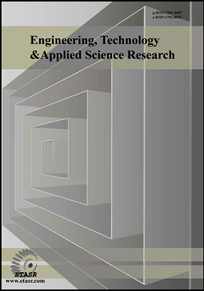A Simple Electronic Circuit for an Automatic Train Safety Stop System
Abstract
A particular safety system known as “dead man’s circuit” detects the presence of human command in the conduction of the trains operated by the Brazilian Company of Urban Trains (CBTU) in Recife, Brazil, thus consisting a security mechanism that makes automatic braking of any train composition circulating in the transportation system of the city feasible in incidents of loss or apparent loss of driving. Originally, the electrical signal indicating human control in the conduction of the vehicles came from the descent of the traction lever in the driving cabins, which caused the switching of a pair of electrical contacts. Given the importance of the system and the need to avoid repetitive strain injuries to drivers, the need to push the traction knob was eliminated by the use of an electronic device developed by an outsourced company and deployed in the trains of the older fleet. However, the high failure and downtime rates associated with the circuit acquired from the referred contracted company, caused the need to develop a more robust and maintenance-friendly design for the dead man’s system. In fact, despite the good performance of the purchased system, the strength of the resin coating that accommodated the capacitive touch sensor assembly at the end of the traction lever prevented the corresponding electronic circuit from any access for research or corrective interventions. Thus, the content of this paper essentially presents the specifications and the description of operation of the alternative electronic circuit designed for the dead man’s system, which is operating normally without electrical defects in 4 old trains for almost a year..
Keywords:
urban trains, safety system, touch sensor, automatic brakingDownloads
References
R. Ahmad, S. Kamaruddin, “Application and Comparison of Three Maintenance Techniques for Replacement Decision Making – a Case Study in the Pulp Manufacturing Industry”, International Journal of Process Systems Engineering, Vol. 2, No. 2, pp. 135-153, 2012 DOI: https://doi.org/10.1504/IJPSE.2012.051016
E. Viles, D. Puente, M. J. Alvarez, F. Alonso, “Improving the corrective maintenance of an electronic system for trains”, Journal of Quality in Maintenance Engineering, Vol. 13, No. 1, pp.75-87, 2007 DOI: https://doi.org/10.1108/13552510710735131
B. Osoinach, Proximity capacitive sensor technology for touch sensing applications, White Paper, FreeScale Semiconductor, 2008
Z. Kappassov, J. A. Corrales, V. Perdereau, “Tactile sensing in dexterous robot hands – Review”, Robotics and Autonomous Systems, Vol. 74, Part A, pp. 195-220, 2015 DOI: https://doi.org/10.1016/j.robot.2015.07.015
V. Gupta, A. Deb, “Speed Control of Brushed DC Motor for Low Cost Electric Cars”, IEEE International Electric Vehicle Conference, Greenville, USA, March 4-8, 2012 DOI: https://doi.org/10.1109/IEVC.2012.6183251
K. Kotcherlakota, V. Chinta, “Smart Home Automation Based on 555 Timer”, International Journal of Engineering Research and Application, Vol. 6, No. 5, pp. 77-80, 2016
H. Goyal, “Understanding of IC 555 Timer and IC 555 Timer Tester”, International Journal of Inventive Engineering and Sciences, Vol. 3, No. 2, pp. 4-6, 2015
Downloads
How to Cite
License
Authors who publish with this journal agree to the following terms:
- Authors retain the copyright and grant the journal the right of first publication with the work simultaneously licensed under a Creative Commons Attribution License that allows others to share the work with an acknowledgement of the work's authorship and initial publication in this journal.
- Authors are able to enter into separate, additional contractual arrangements for the non-exclusive distribution of the journal's published version of the work (e.g., post it to an institutional repository or publish it in a book), with an acknowledgement of its initial publication in this journal.
- Authors are permitted and encouraged to post their work online (e.g., in institutional repositories or on their website) after its publication in ETASR with an acknowledgement of its initial publication in this journal.






